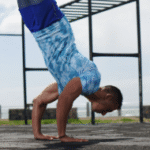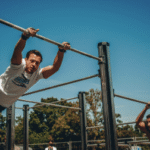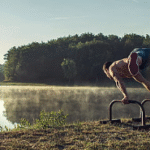Sauna vs. Steam Room for Contrast Therapy
Sauna versus a Steam Room as the “hot” component in Contrast Therapy, specifically for an audience in the USA.
Understanding Contrast Therapy
Contrast therapy involves alternating between exposure to significant heat and significant cold. The most common application, especially for athletes and wellness enthusiasts, is alternating between a hot environment (like a sauna or steam room) and cold water immersion (cold plunge/ice bath) or a cold shower. The goal is typically to improve recovery, reduce muscle soreness, potentially decrease inflammation, and stimulate circulation. This comparison focuses only on the “hot” part of that cycle.
Defining the Hot Environments:
Sauna (Traditional Finnish Style is the Archetype):
Heat Type: Primarily dry heat.
Temperature: High, typically ranging from 170°F to 195°F (75°C to 90°C), sometimes even higher.
Humidity: Very low (often 10-20% baseline). Humidity can be temporarily and significantly increased by ladling small amounts of water onto heated rocks (known as löyly in Finnish tradition), creating a wave of steam.
Heat Source: Traditionally wood-fired stoves or, more commonly now, electric heaters warming a pile of rocks.
Environment: Usually wood-paneled rooms, which absorb some humidity and create a distinct atmosphere.
Steam Room (Steam Bath):
Heat Type: Wet heat.
Temperature: Lower than a traditional sauna, typically ranging from 110°F to 120°F (43°C to 49°C).
Humidity: Very high, approaching 100%. The air is saturated with water vapor.
Heat Source: A steam generator boils water and pumps the resulting steam into the airtight room.
Environment: Usually constructed with non-porous materials like tile, glass, or acrylic to withstand the constant moisture.
Sauna vs. Steam Room for the “Hot” Phase of Contrast Therapy:
Here’s a detailed comparison focusing on their use before transitioning to cold:
Feature Sauna (Traditional Finnish) Steam Room
Primary Heat Type Dry Heat Wet Heat (Steam)
Operating Temperature High (170-195°F / 75-90°C) Lower (110-120°F / 43-49°C)
Humidity Level Low (10-20%), with brief spikes if water is added Very High (~100%)
Sensation Intense, radiating dry heat; skin feels very hot; sweat evaporates quickly (unless löyly) Enveloping, moist heat; feels heavy/dense; sweat drips rather than evaporates
Sweating Profuse sweating induced by high temperature Profuse sweating, but less evaporation makes it feel wetter
Cardiovascular Effect Significant increase in heart rate and peripheral circulation due to high heat load Significant increase in heart rate and circulation; high humidity can increase perceived exertion
Respiratory Effect Dry air can feel harsh for some; löyly provides temporary relief/moisture Moist air can feel soothing for airways, helpful for congestion
Skin Effect Promotes deep sweating, cleansing pores Provides intense surface hydration to the skin
Temperature Gradient Creates a larger temperature difference between the hot environment and the subsequent cold plunge/shower Creates a smaller temperature difference compared to a traditional sauna
“Contrast Shock” The larger temp gradient might induce a more intense physiological “shock” response upon entering cold The transition to cold might feel subjectively less jarring due to the lower starting temperature
Availability in USA Very common in gyms, spas, wellness centers, some homes Also common, often found alongside saunas in gyms and spas
Hygiene Note Dry environment less prone to mold; wood needs care High humidity requires rigorous cleaning protocols to prevent mold/bacteria
Which is “Better” for Contrast Therapy?
There’s no definitive scientific consensus proving one is significantly superior to the other specifically for maximizing the physiological benefits of the contrast itself. Both effectively raise core body and skin temperature, which is the primary requirement for the “hot” phase before the cold stimulus. However, arguments can be made for each:
Arguments for Sauna:
Greater Temperature Differential: The significantly higher temperature achieved in a sauna creates a more extreme temperature gradient when transitioning to the cold plunge. Theoretically, this larger thermal shock could elicit a stronger physiological response (e.g., more intense vasoconstriction/vasodilation cycles, greater hormonal release like norepinephrine).
Traditional Basis: The practice of contrast bathing (hot followed by cold) has deep roots in cultures with strong sauna traditions (like Finland), where the sauna is the natural “hot” component.
Arguments for Steam Room:
Tolerance: Some individuals find the lower temperature of a steam room more tolerable, potentially allowing them to stay in the heat phase slightly longer before needing to cool down.
Respiratory Benefits: If respiratory comfort or clearing congestion is also a goal, the steam room offers advantages.
Moisture: Some may prefer the feeling of moist heat over dry heat.
The Deciding Factor: Personal Preference and Tolerance: Ultimately, the “better” choice often comes down to:
Which environment do you tolerate better and find more enjoyable? Consistency is key for any therapy, and you’re more likely to stick with something you prefer.
What feels more effective to you? Some people report feeling a more profound effect from the sauna-to-cold transition, while others feel perfectly invigorated using a steam room.
What is available to you? Many facilities in the USA offer both, allowing you to experiment.
Infrared Saunas in Contrast Therapy:
It’s worth noting that infrared (IR) saunas, also popular in the USA, differ from both traditional saunas and steam rooms. They use infrared light to heat the body directly at lower ambient air temperatures (often 120-150°F / 50-65°C). While effective for relaxation and sweating, the air temperature is much lower than a traditional sauna. This means the temperature gradient experienced when moving to a cold plunge will be less dramatic compared to transitioning from a traditional high-heat sauna. Whether this impacts the overall contrast therapy effect compared to traditional sauna use is not well-studied, but it provides a less intense heat experience.
Safety Recap:
Regardless of whether you choose a sauna or steam room, always practice heat safety: stay hydrated, limit session duration based on tolerance (typically 10-20 minutes), avoid alcohol, and listen to your body, exiting immediately if you feel unwell. Consult a doctor before using heat therapies if you have cardiovascular conditions, blood pressure issues, or other relevant health concerns.
Conclusion:
Both traditional saunas (high temperature, dry heat) and steam rooms (lower temperature, high humidity) effectively serve as the “hot” component for contrast therapy, widely available across the USA. Saunas offer a larger temperature difference leading into the cold phase, aligning with traditional contrast practices and potentially maximizing the thermal shock. Steam rooms provide benefits of moist heat, particularly for the respiratory system, at a lower temperature. As robust scientific evidence doesn’t definitively favor one over the other for the specific purpose of enhancing the contrast effect, the best choice often hinges on personal preference, tolerance, availability, and individual goals. Both can effectively prepare the body for the subsequent cold exposure that defines contrast therapy.

Sauna vs. Steam Room for Contrast Therapy
Route
Calisthenics Gym Houston Functional Bodyweight Training
Secondary phone: (346) 483-3195
Email: info@calisthenicsclubhouston.com
URL: https://calisthenicsclubhouston.com/
Monday 6:00 AM - 7:00 PM Tuesday 6:00 AM - 7:00 PM Wednesday 6:00 AM - 7:00 PM Thursday 6:00 AM - 7:00 PM Friday 12:00 PM - 6:30 PM Saturday 9:45 AM - 12:00 PM Sunday 3:00 PM - 5:00 PM





